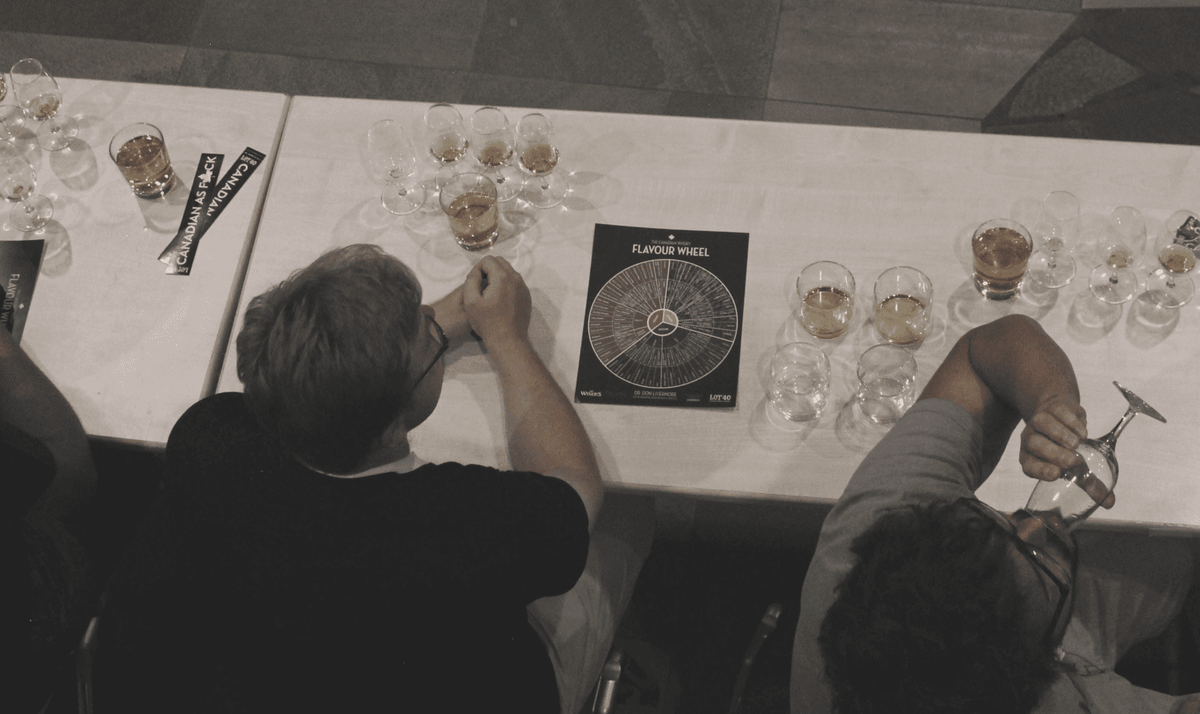
How To Taste & Analyze Spirits Like a Pro
|
|
Time to read 3 min
|
|
Time to read 3 min
Spirits tasting is a dynamic process that incorporates the majority of your senses from sight and smell to taste and feel.
It’s all in the details as experts make note of characters pertaining to the base material, distillation method, and any post-production methods. During this process they may even uncover any faults in the distillate. But what it comes down to are two main questions.
Is this or is this not a superior example of the category? Your personal taste is one thing, but is this a spirit that consumers would generally enjoy?
One must first prep before tasting. Your palate being fresh is crucial so it helps to refrain from coffee, smoking, spicy food, or brushing your teeth just before you begin tasting. It’s also important to make sure you have proper glassware and the spirits are at room temperature as to not mask any characters.
Starting with its appearance, we first determine whether the spirit has stable clarity or if by dropping a bit of water it louches into a haze that reveals heavy oils remaining in the spirit.
Unless specifically intended, this is not necessarily a sign of quality. Then looking at color, a spirit’s golden or amber hue can also hint at how long it spent maturing in oak.
Then we sniff…as in actual puppy sniffs, particularly with the glass a couple of inches away from your nose to prevent alcohol burn. After giving the glass a delicate swirl, our first observation is if there are any faults or off-odors.
This can be caused at many stages throughout the distillation process and it is the expert's job to foresee these faults and where they may have happened.
After that we analyze the expressiveness of the spirit, even in low aromatic styles. It’s easy to detect aromas in Gin, but to uncover the subtleties of Vodka requires your undivided attention. Aromatic characters should have an authentic nature as if you've just pulled that herb or berry, otherwise we take note of their synthetic presence in the spirit.
What we smell in the glass can lead us to decipher the type and quality level of the base material, from the fruit used in Eau de Vie to the type of grain used in Whiskey, even sugar cane juice versus molasses in Rum. For spirits matured in oak, this can also allude to the toast level, age, and length of time spent in oak.
Particularly noticeable in unaged spirits, the purity of the base material should be apparent. Mezcal should portray the purity of agave while Amaro should accurately represent each ingredient used in its production.
From there we take a modest sip and allow it to move about our palate. For lesser spirits ethanol will steal the show with its unbearably harsh bite. In well-made spirits the alcohol will be seamlessly integrated with its elegant texture.
Once we’ve evaluated the overall balance we move on to the flavor characters that include esters – or easily detected compounds that contribute flavor.
Other factors that are responsible for flavor include the base material, yeast selection, additions such as dunder to concentrate esters and acid, distillation method, and barrel maturation - or lack thereof. Once we’ve fully assessed the flavors and mouthfeel we would consider if the spirit has a long, evolving finish.
But what it all comes down to is quality. Is there an overall sense of purity in the spirit or does it taste unclean and out of balance? Is the alcohol softly synergized within spirit? Are the aromas and flavors in harmony or is something particularly overbearing?
Asking yourself questions like these will allow you to analyze both the distiller’s experience and intention. You should inevitably be able to experience every facet while tasting it neat, indicating its prestige as a standalone spirit.
Finishing off with some final conclusions, we then decide if the spirit is true to its category.
Is this Rum so overpowered by smoky oak lactones that it’s reminiscent of Bourbon? Or is this particular coffee Liqueur so off-putting that it doesn’t exemplify the high potential for this category?
Even for more obscure spirits such as Prickly Pear Brandy or Douglas Fir Eau de Vie the quality should always speak to the integrity of that category as a whole.
When all is said and done, it’s up to you and your unbiased decision as to whether a spirit is both pleasurable and of utmost quality. You may not be a fan of Grappa, but you must be able to appreciate the sleek texture and floral esters of one that is award-worthy.
In the end, objectivity is key whenever assessing the true quality of spirits.

